Showing Spotlights 561 - 568 of 2779 in category All (newest first):
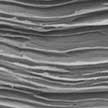 Graphene's outstanding mechanical and electrical properties make it a very attractive material for applications in aerospace and flexible electronics. This, however, requires the assembly of graphene into macroscopic graphene nanocomposites. Researchers report a novel strategy to 'stitch' reduced graphene oxide nanosheets into ultra-strong, super tough, and highly conductive graphene films using only small amounts of cross-linker. Their technique provides substantial improvement in multiple properties including tensile strength, toughness, electrical conductivity, EMI shielding capability, and resistance to mechanical damage.
Graphene's outstanding mechanical and electrical properties make it a very attractive material for applications in aerospace and flexible electronics. This, however, requires the assembly of graphene into macroscopic graphene nanocomposites. Researchers report a novel strategy to 'stitch' reduced graphene oxide nanosheets into ultra-strong, super tough, and highly conductive graphene films using only small amounts of cross-linker. Their technique provides substantial improvement in multiple properties including tensile strength, toughness, electrical conductivity, EMI shielding capability, and resistance to mechanical damage.
May 17th, 2019
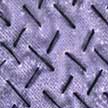 Researchers have developed a comprehensive approach involving simple and facile steps to fabricate a wearable energy storage device based on carbon nanotube coated cotton yarn. All device components are flexible. According to the team, this is the first device that has been proven to be stable under rigorous washing conditions in the presence of hot water, detergents and high torque (spinning action of washing machine). This provides the device with comprehensive mechanical stability.
Researchers have developed a comprehensive approach involving simple and facile steps to fabricate a wearable energy storage device based on carbon nanotube coated cotton yarn. All device components are flexible. According to the team, this is the first device that has been proven to be stable under rigorous washing conditions in the presence of hot water, detergents and high torque (spinning action of washing machine). This provides the device with comprehensive mechanical stability.
May 15th, 2019
 Borophene, the atomically flat form of boron, differs from graphene and other two-dimensional (2D) materials in an important way: It can't be reduced from a larger natural form because bulk boron is not naturally layered. While graphite is composed of stacks of atomically thin sheets that can be peeled off one at a time to make graphene, there is no such analogous process for making 2D boron. Or so researchers had thought. Now, however, researchers have synthesized free-standing borophene for the first time and in a scalable manner.
Borophene, the atomically flat form of boron, differs from graphene and other two-dimensional (2D) materials in an important way: It can't be reduced from a larger natural form because bulk boron is not naturally layered. While graphite is composed of stacks of atomically thin sheets that can be peeled off one at a time to make graphene, there is no such analogous process for making 2D boron. Or so researchers had thought. Now, however, researchers have synthesized free-standing borophene for the first time and in a scalable manner.
May 14th, 2019
 Superlubricity is a phenomenon where two surfaces slide over each other with barely any resistance (a state that is called near-zero friction). This is a very special case where friction almost vanishes between two surfaces. The difficulty of achieving superlubricity in mechanical systems is due to the very complex physical, chemical, and mechanical interactions that occur simultaneously at the sliding interfaces of these systems. Superlubricity is one of the most promising properties of functional nanomaterials for energy saving applications.
Superlubricity is a phenomenon where two surfaces slide over each other with barely any resistance (a state that is called near-zero friction). This is a very special case where friction almost vanishes between two surfaces. The difficulty of achieving superlubricity in mechanical systems is due to the very complex physical, chemical, and mechanical interactions that occur simultaneously at the sliding interfaces of these systems. Superlubricity is one of the most promising properties of functional nanomaterials for energy saving applications.
May 10th, 2019
 Researchers a new strategy for designing Pickering emulsion based on halloysite nanotubes and exploring chitosan and pectin as thickener additives for the development of cleaning and preservation applications for cultural heritage. This novel and facile strategy to prepare hydrogel containing oil-in-water stable emulsion offers an alternative route to prepare formulations with high performance and based on sustainable materials for the controlled cleaning and preservation of stone-based artworks.
Researchers a new strategy for designing Pickering emulsion based on halloysite nanotubes and exploring chitosan and pectin as thickener additives for the development of cleaning and preservation applications for cultural heritage. This novel and facile strategy to prepare hydrogel containing oil-in-water stable emulsion offers an alternative route to prepare formulations with high performance and based on sustainable materials for the controlled cleaning and preservation of stone-based artworks.
May 8th, 2019
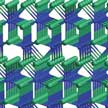 Rare earth metals and alloys that contain them are used in many devices that people use in their everyday lives. Whereas the research on two-dimensional (2D) nanomaterials such as graphene, hexagonal boron nitride, MXenes, transition metal dichalcogenides, or metal-organic frameworks moves full-steam ahead, overview reports on 2D rare earth materials are, well, rare. However, with the electron confinement within mono- or multi-layers, the optical, magnetic, electric, catalytic, and adsorptive properties of ultrathin 2D rare-earth nanomaterials may also vary remarkably from those of the bulk phase, opening up great opportunities for applications in numerous areas.
Rare earth metals and alloys that contain them are used in many devices that people use in their everyday lives. Whereas the research on two-dimensional (2D) nanomaterials such as graphene, hexagonal boron nitride, MXenes, transition metal dichalcogenides, or metal-organic frameworks moves full-steam ahead, overview reports on 2D rare earth materials are, well, rare. However, with the electron confinement within mono- or multi-layers, the optical, magnetic, electric, catalytic, and adsorptive properties of ultrathin 2D rare-earth nanomaterials may also vary remarkably from those of the bulk phase, opening up great opportunities for applications in numerous areas.
May 7th, 2019
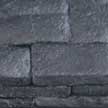 Highly compressible graphene aerogels possess extraordinary properties that exceed the performance of natural materials - superior compressive elasticity; ultrahigh porosity; outstanding tolerance for harsh environment; large specific surface area; high electrical and thermal conductivity. Now, researchers have fabricated graphene aerogel 'bricks' that can be assembled into much larger aerogel structures. These highly oriented and dense microstructures possesses arbitrary macroscale, outstanding compressive strength, superelasticity, and high conductivity.
Highly compressible graphene aerogels possess extraordinary properties that exceed the performance of natural materials - superior compressive elasticity; ultrahigh porosity; outstanding tolerance for harsh environment; large specific surface area; high electrical and thermal conductivity. Now, researchers have fabricated graphene aerogel 'bricks' that can be assembled into much larger aerogel structures. These highly oriented and dense microstructures possesses arbitrary macroscale, outstanding compressive strength, superelasticity, and high conductivity.
May 6th, 2019
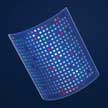 Electronic device versions of the human eye's photoreceptors could potentially be used in a wide range of applications from robotic humanoid vision to artificial retina implantation for vision restoration or even vision extension into a wider range of wavelength. Researchers have now demonstrated that high-performance filterless artificial human photoreceptors can be realized by integrating a novel optical metal/dielectric/metal microcavity structure with vacuum-deposited perovskite photoresponse devices. These easy-to-fabricate artificial photosensors mimic the spectral responses of human color cones and rods.
Electronic device versions of the human eye's photoreceptors could potentially be used in a wide range of applications from robotic humanoid vision to artificial retina implantation for vision restoration or even vision extension into a wider range of wavelength. Researchers have now demonstrated that high-performance filterless artificial human photoreceptors can be realized by integrating a novel optical metal/dielectric/metal microcavity structure with vacuum-deposited perovskite photoresponse devices. These easy-to-fabricate artificial photosensors mimic the spectral responses of human color cones and rods.
May 1st, 2019
 Graphene's outstanding mechanical and electrical properties make it a very attractive material for applications in aerospace and flexible electronics. This, however, requires the assembly of graphene into macroscopic graphene nanocomposites. Researchers report a novel strategy to 'stitch' reduced graphene oxide nanosheets into ultra-strong, super tough, and highly conductive graphene films using only small amounts of cross-linker. Their technique provides substantial improvement in multiple properties including tensile strength, toughness, electrical conductivity, EMI shielding capability, and resistance to mechanical damage.
Graphene's outstanding mechanical and electrical properties make it a very attractive material for applications in aerospace and flexible electronics. This, however, requires the assembly of graphene into macroscopic graphene nanocomposites. Researchers report a novel strategy to 'stitch' reduced graphene oxide nanosheets into ultra-strong, super tough, and highly conductive graphene films using only small amounts of cross-linker. Their technique provides substantial improvement in multiple properties including tensile strength, toughness, electrical conductivity, EMI shielding capability, and resistance to mechanical damage.
 Subscribe to our Nanotechnology Spotlight feed
Subscribe to our Nanotechnology Spotlight feed





